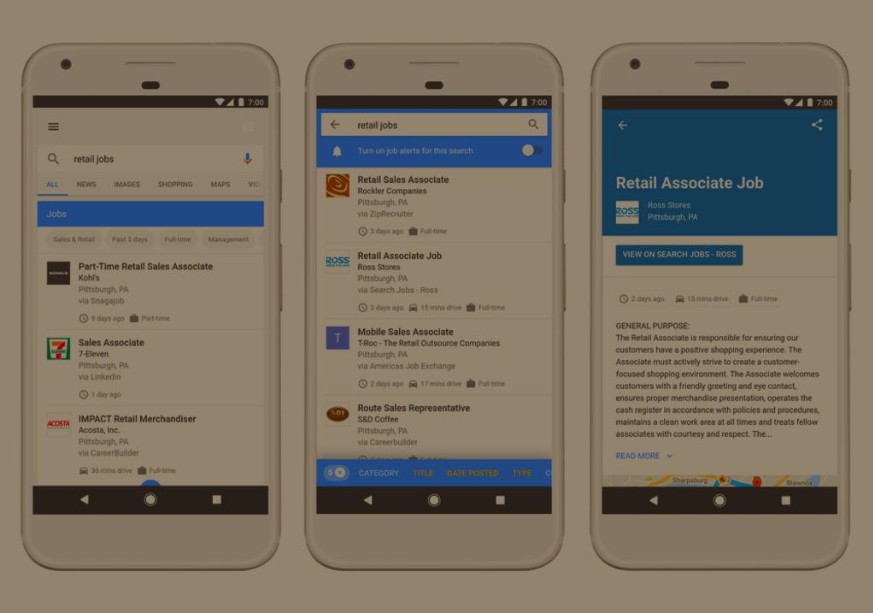
Google For Jobs was launched in June 2017 and only requires three elements for it to be able to pull through job listings from your site, into its UI -
- A job listing that is on a unique page.
- A sitemap that updates daily at the very least.
- Implementation of jobPosting schema that you can validate in Googles Structured Data Testing Tool.
And that’s it!
Googles 100s and possibly 1000s of elements in its algorithms should then be able to understand the context of your page and show your job listing to relevant job seekers, ensuring the experience is flawless.
We have seen huge uplifts in impressions to job details information for clients that have implemented the aforementioned mark-up on site. But Google need to continue working on the product, as the experience for job seekers is far from flawless.
Duplicate Job Listings
Websites have real problems getting found in Googles regular search engine if they don’t adhere to the search engines Webmaster Guidelines, which is a document created to enhance the searchers experience. For example, it’s highly unlikely that you will see two exact pieces of content on the first page of Googles search results. But that rule doesn’t seem to have been passed down to GFJ.
A quick search for ‘java developer jobs’ in GFJ brings up a duplicate job description in the first six results, with the job seemingly being at the same employer. One listing is being filled by a recruitment agency, and the second listing is also being filled by the same agency, only they have pushed this job description out to a well-known job board, which GFJ is pulling into its feed.
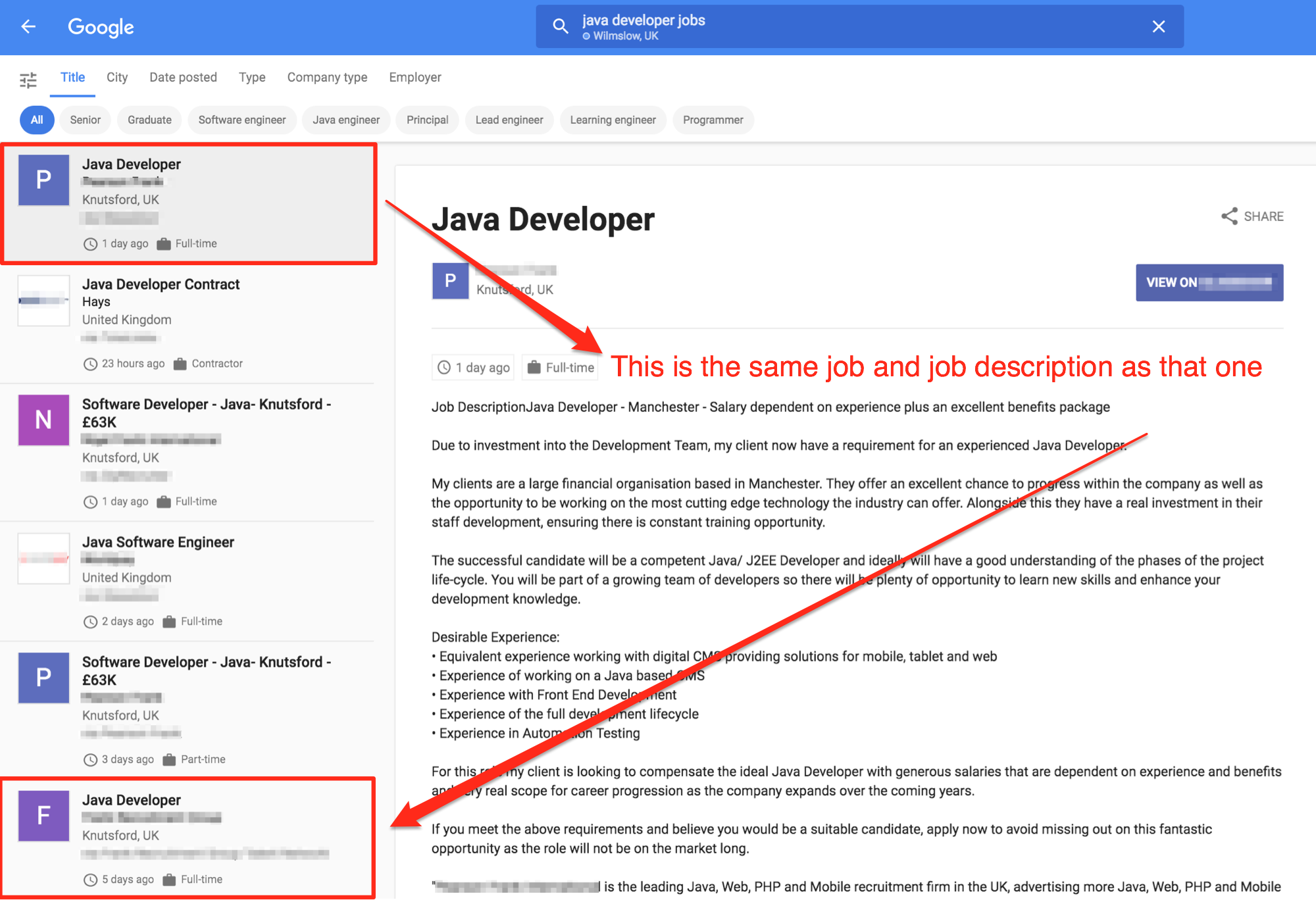
Tip: If you are a recruitment agency or in-house employer that utilises GFJ on site, then ensure that you also promote the position through well-known job boards, as its highly likely you will be able to take up a larger portion of the real estate in the interface.
If you are the job seeker…well you’ve just applied for the same position twice! What a waste of time.
Blank Listings
One of the reasons that Google created its new platform is to drive ‘more motivated applicants’ through to employers and recruiters. But how motivating is the below listing?
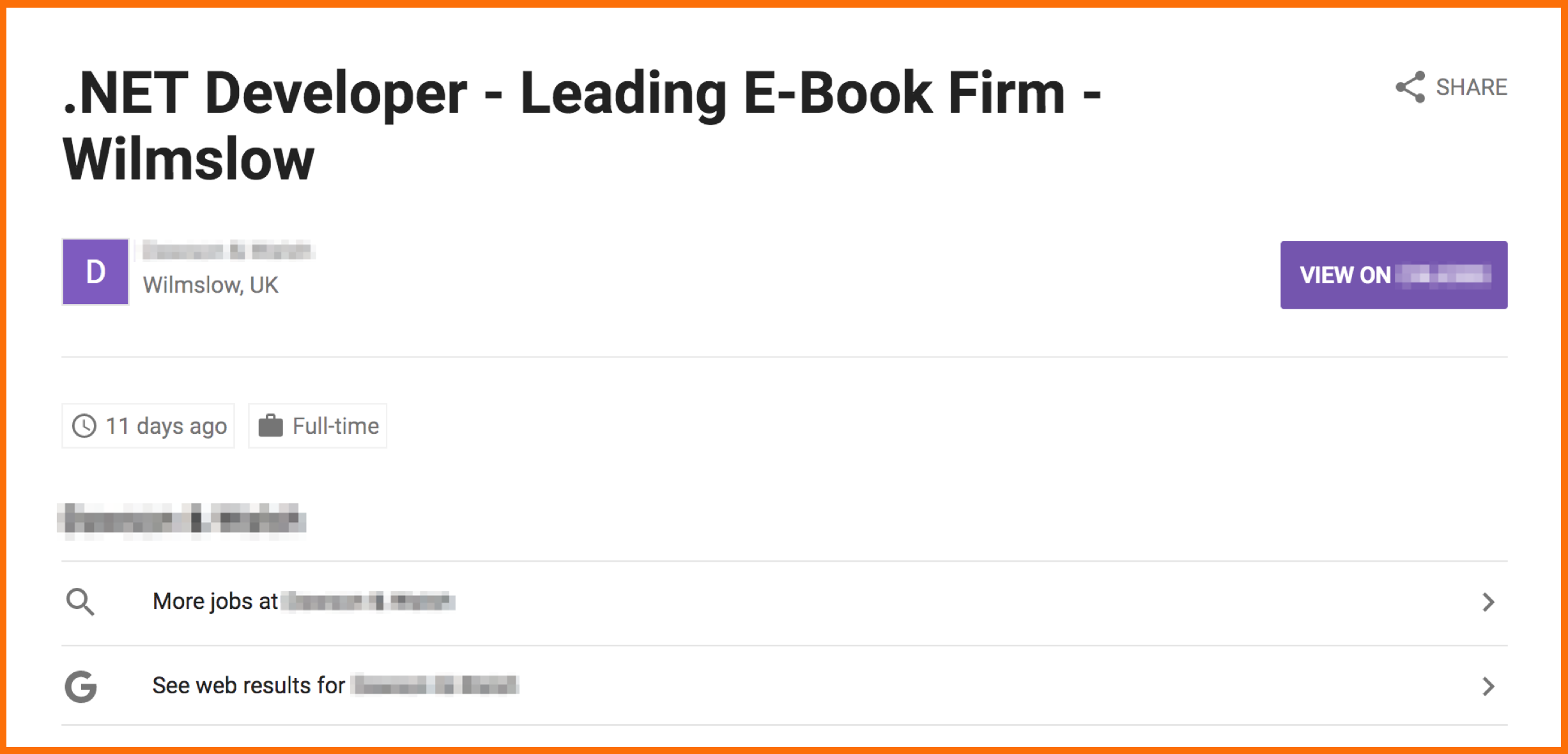
The motivation for applicants to find employers is going to be extremely low when they are greeted by blank job descriptions.
There are clear guidelines for GFJ, with one of them being “Don’t add structured data to listing pages (pages that show a list of jobs).” The above listing violates this, highlighting the fact that in its infancy, the GFJ algorithm is nowhere near as stringent as the regular search algo.
The user doesn’t want to be sent to a job listing page, they want to go to the job details page where they can directly apply for the role, quickly and easily.
Which takes me to my final point.
Inaccurate Commute Times
The majority of people’s place of work, is within a short commute from their home. A major benefit of GFJ is the fact that it is able to understand location data and use Google Maps, enhancing the ability for job seekers to understand the geography of their potential new work place.
However, for this to work effectively GFJ relies on the implementation of structured data. But structured data should only work for maps, if it actually shows the location of where the job is.
Do the following job listings come from a bar that is employing a Java Developer? I guess that could be possible.
Or are the job listings coming from different recruitment agencies, that are using the same large job board, which has implemented address schema pointing to its local offices?
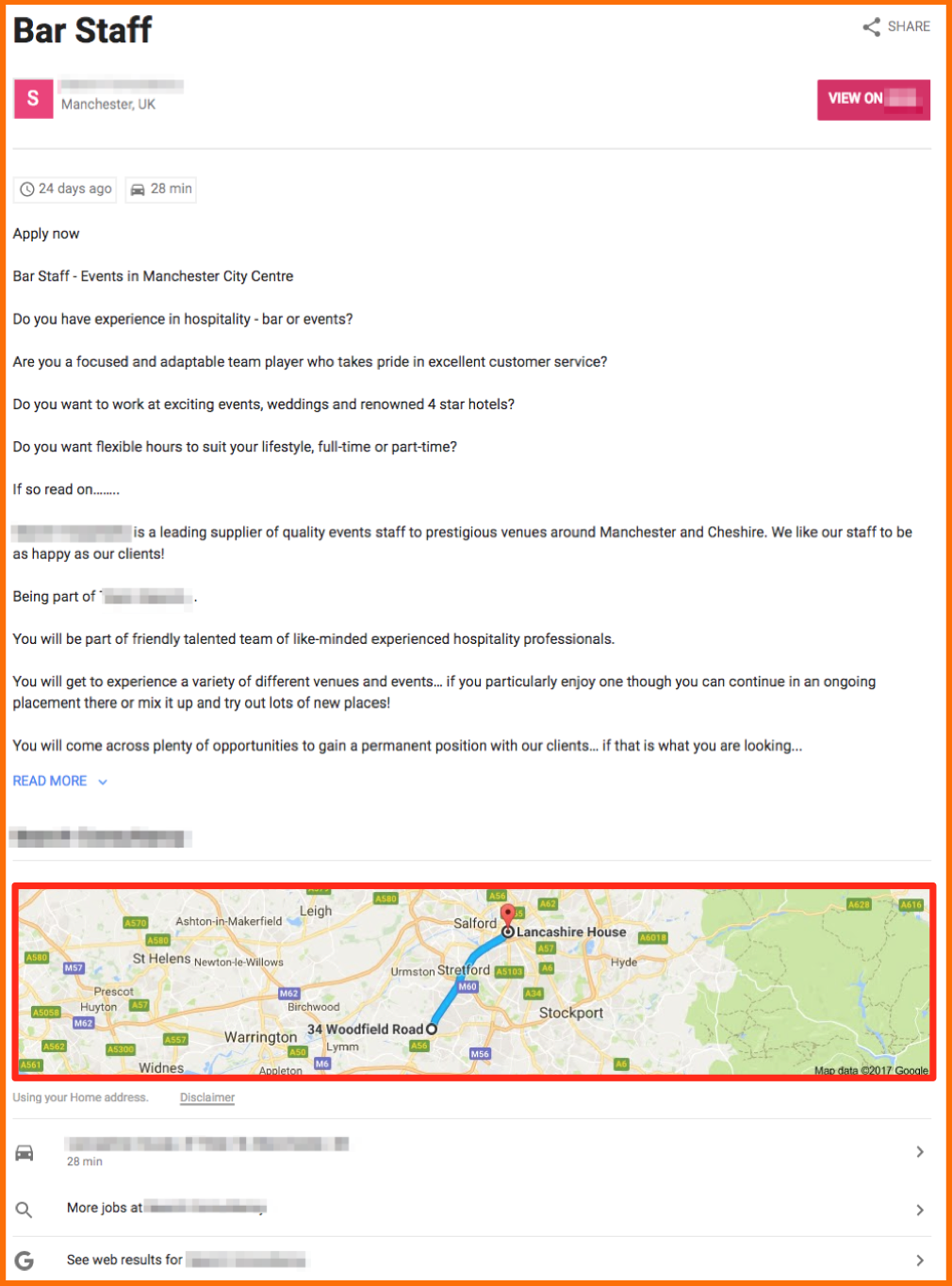
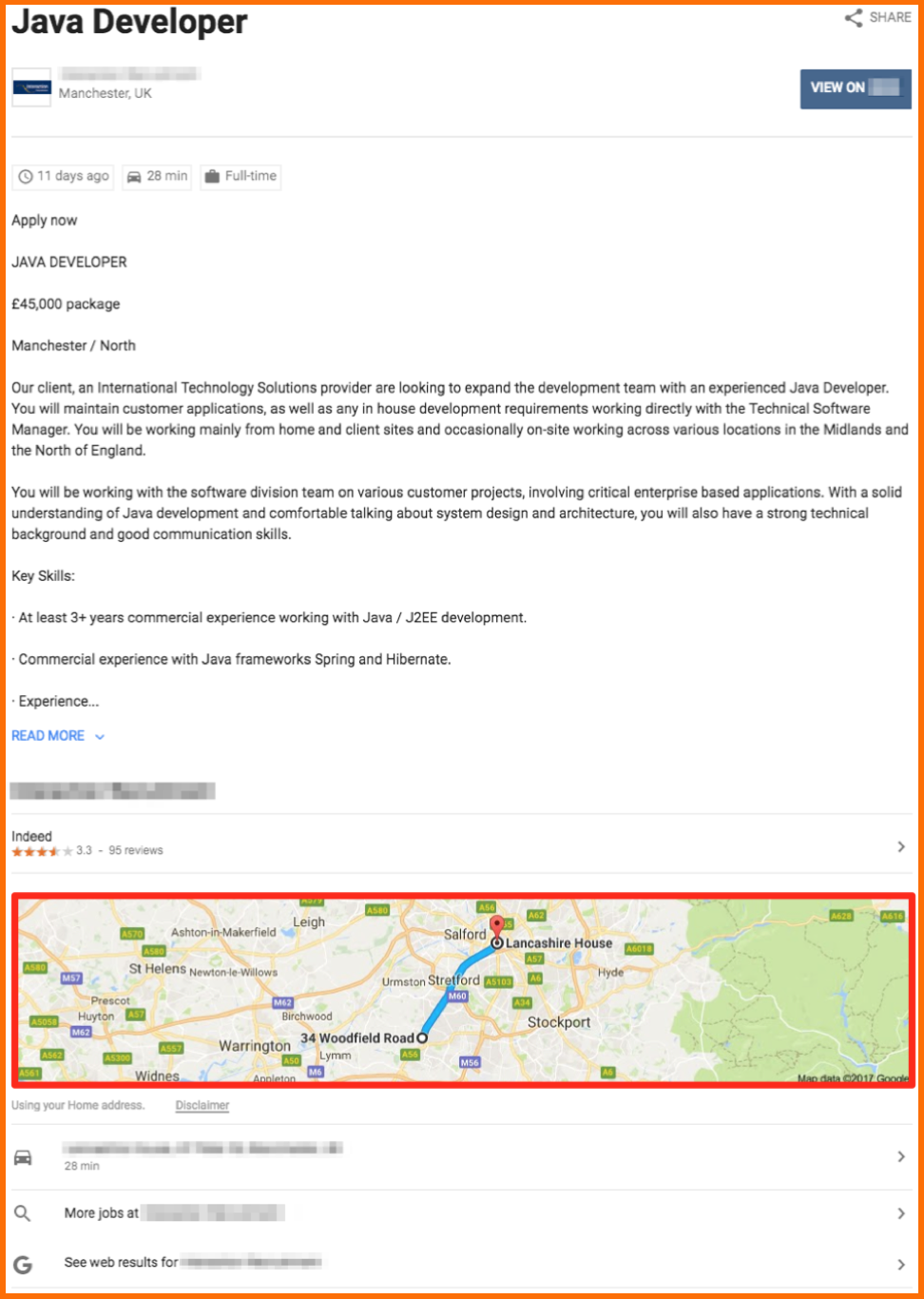
It’s a little bit misleading isn’t it.
The commute time may be the difference between someone applying and getting a job, or someone applying for a job, finding out its not where they thought it was, thinking they have wasted their time and deciding not to use that recruitment agency in the future.
In order for GFJ to reach its full potential, Google needs to understand the difference between job boards, recruitment agencies and in-house employers.
Recruitment agencies are unlikely to give away the location of a role, for fear that another recruiter is going to come along and fill that role. This means, that as a rule, roles filled by recruitment agencies should not include map data, as its highly likely to be inaccurate.
GFJ needs job boards, as they have high volumes of jobs listed in a structured way, enabling the search engine to quickly understand and crawl new job openings to fill the feed.
However, Job boards also have a reliance on recruitment agencies to place roles on the job board website. Which means that the same information is going to be transferred from the original recruitment agency description to the job board website, creating duplication. It also means the job boards will generally have inaccurate location data about where a job listed.
Actual employers are the only party who are likely to accurately implement jobLocation schema, as there is no threat from external companies to fill the role. It is also in the employer’s interest to fill roles from employees that live in a commutable distance to their office, so is this the only party who should be guaranteed that location data will be pulled through to their listing?
GFJ is very close to being a ground-breaking tool for job seekers, but to do this, Google needs to be as stringent with its job algorithm as it is with its main search algorithm. If it isn’t, then applicants will get a lesser experience than they are used to from Googles toolset and will just go back to what they are used to, which is Googling ‘Indeed’.




